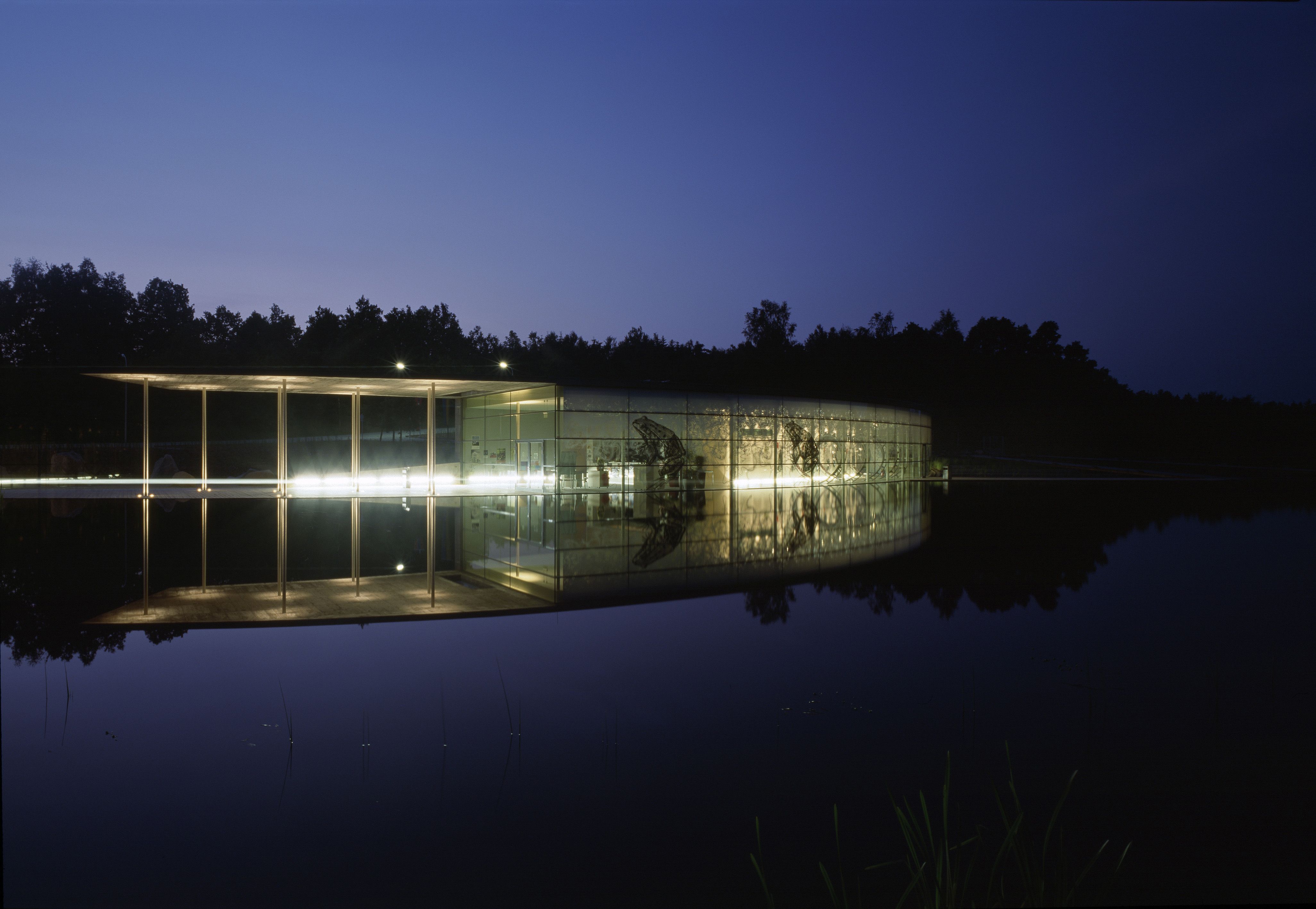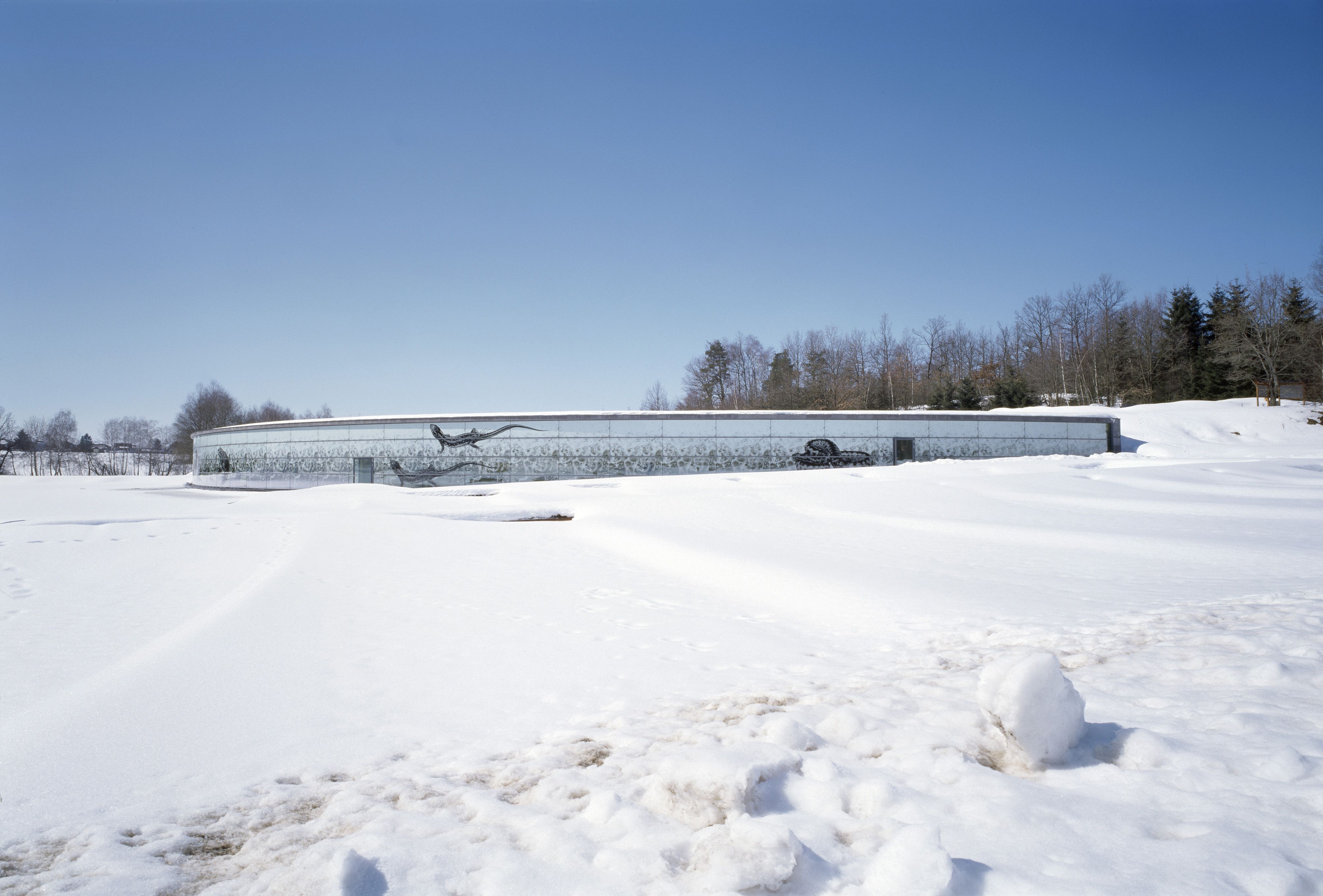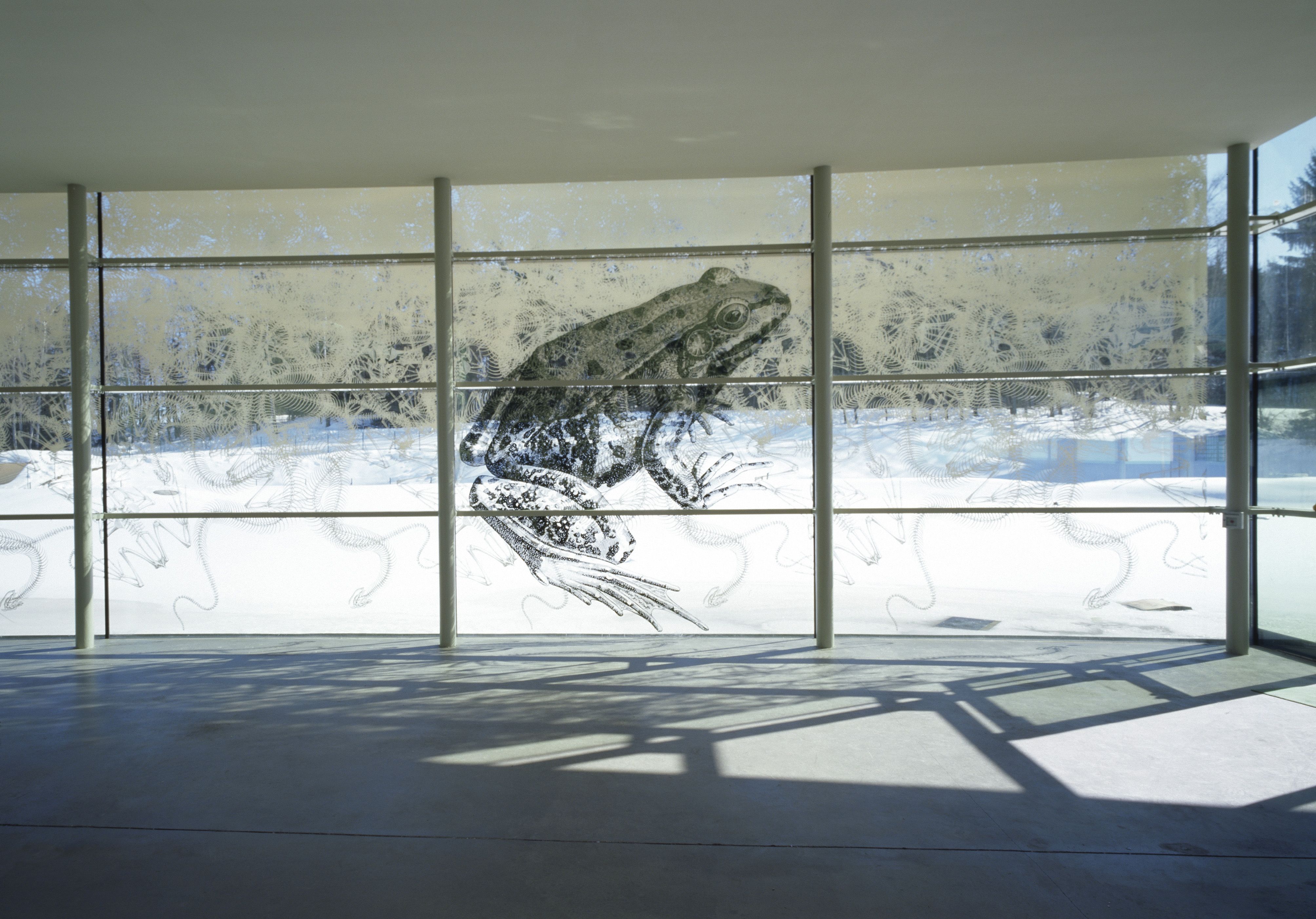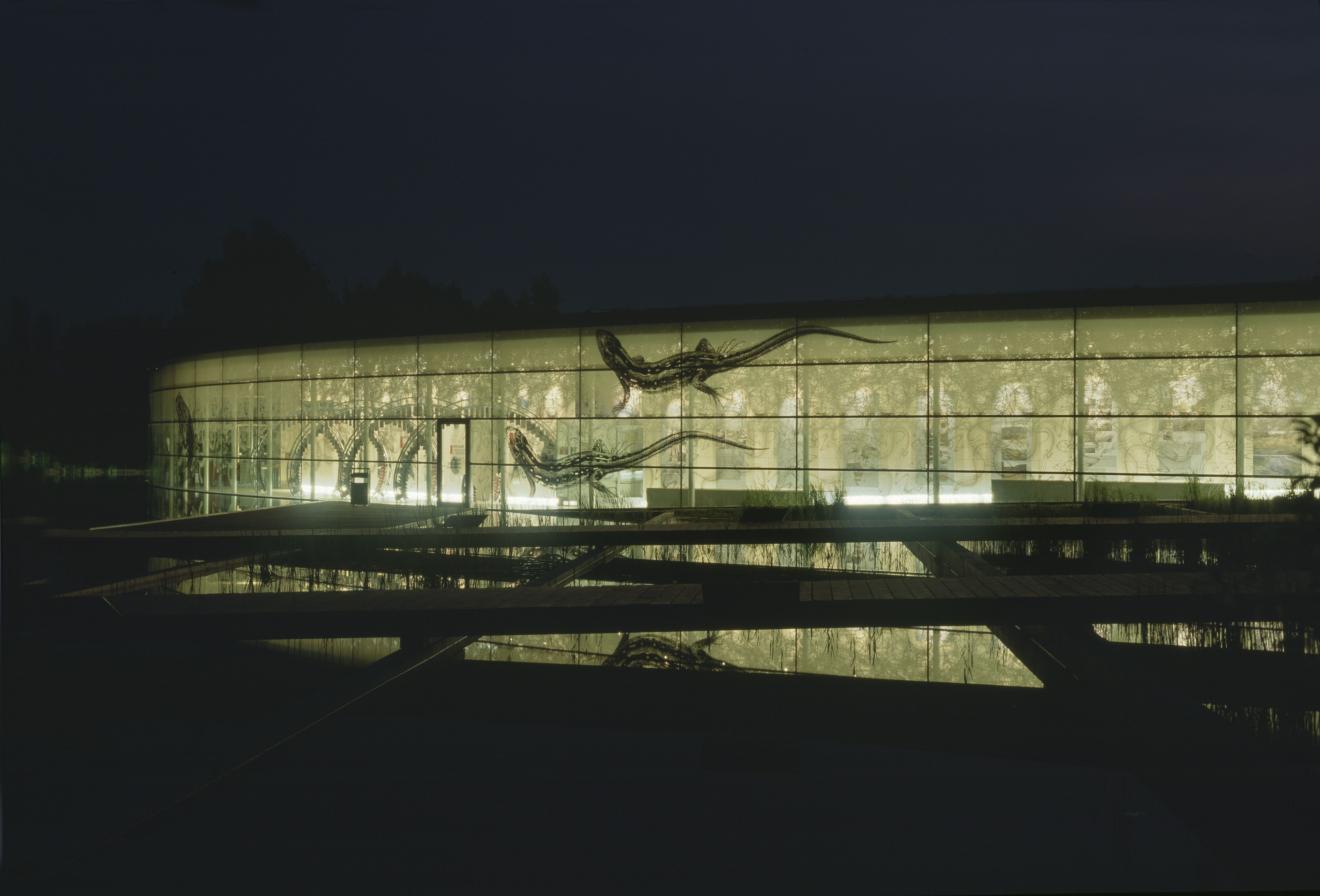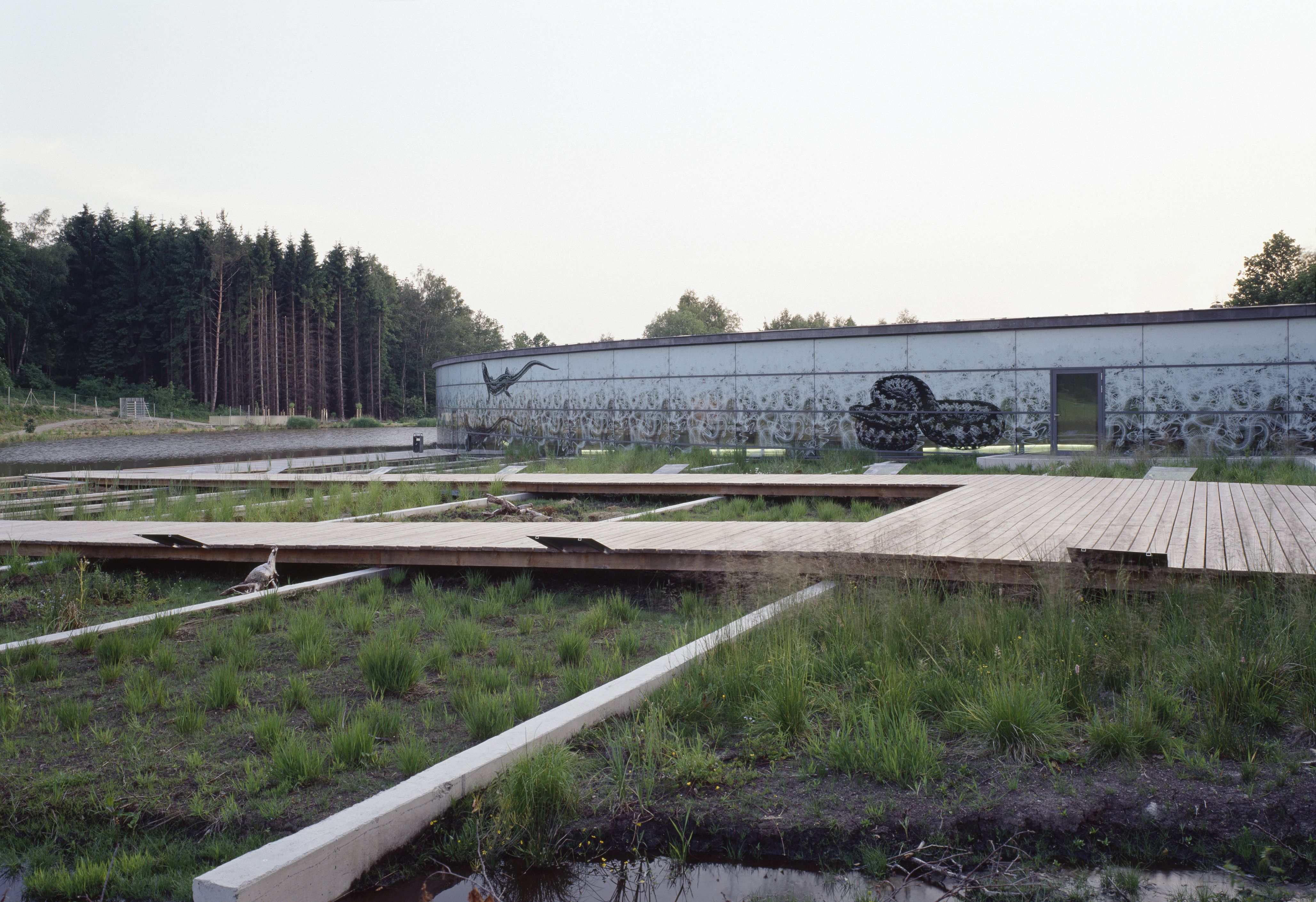Ingeborg Strobl
:
Unterwasserreich in Schrems
Back
Information
The three black depictions of a water frog, a sand lizard and a European adder on the façade of the building are based on illustrations from historical reference books. They were screen-printed onto the outer glass skin over background ornamentation showing white skeletons and amphibians covering the entire façade.
The Ramsar Convention – signed in Ramsar, Iran, in 1971 – is, as a convention on wetlands, the single most significant international agreement for the protection of moors, rivers and lakes. In addition to the existing areas in Vorarlberg and Burgenland, the Ramsar Centre was opened in Schrems in 2006, housed in a low-energy building by the architects AH3, to implement an appropriate programme for the conservation and sustainable usage of the wetlands in the Waldviertel.
Taking her profound personal interest in amphibians, lizards and snakes as a starting point, and knowing that these animals are far less popular than others, Ingeborg Strobl has made visible use of her knowledge about them. She researched in old reference books for exemplary depictions and reproduced etchings and lithographs from the turn of the century in three large black screen prints: a pool frog, a sand lizard and a European adder. Contrasting and powerful, they are clearly visible in front of the white of a drawing that stretches along the full length of the facade, even from a distance. What looks reminiscent of lace curtains from afar proves to be an organic pattern close-up, comprised of skeletons that also stem from reptiles and amphibians. Functioning as a sunscreen, the white print in the upper part forms a dense mesh that becomes more permeable in the lower segments and is effective from inside too.
(Susanne Neuburger)
Images (5)
